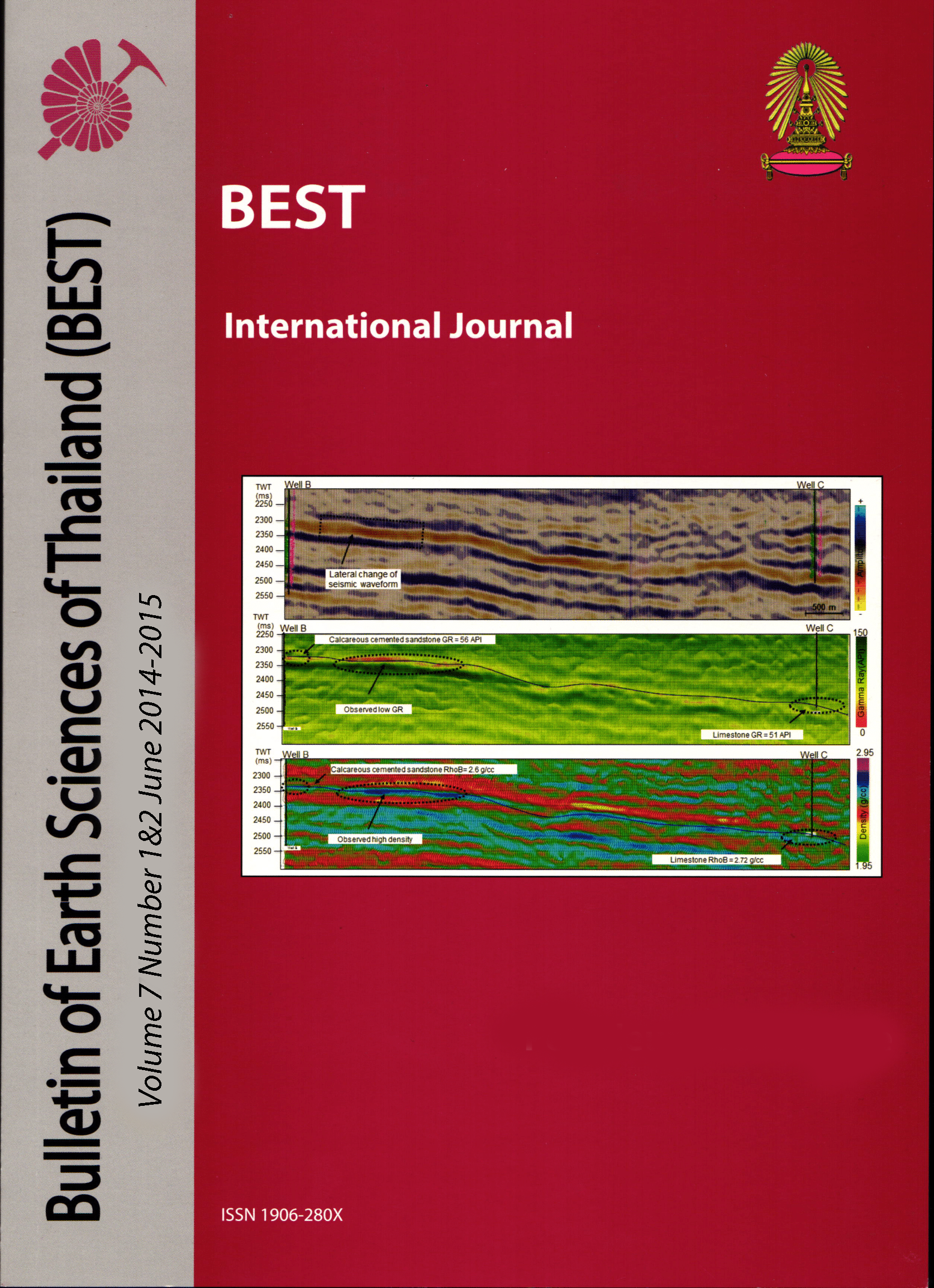FACIES DISTRIBUTION AND DIAGENETIC EVOLUTION OF A CARBONATE RESERVOIR IN PHA NOK KHAO FORMATION, SINPHUHORM, THAILAND
Main Article Content
Abstract
Structure likely controls the reservoir quality in the Sinphuhorm field, NE Thailand as is indicated by rapid lateral changes in reservoir quality between closely spaced exploration and delineation wells in this field. Fluids that entered the subsurface system are associated with different stages of deposition and diagenesis. Variations in oxygen isotope values are indicators of the fluid temperatures in different events. A field study in Permian carbonates in quarries in CentralThailand has documented the isotope signature of various fluid events that can be used as a template to classify the diagenetic evolution of these carbonates (Warren. et. al, 2011).
This research focuses on subsurface data from well cuttings in PhuHorm field and generates a carbon-oxygen isotope set of plotfields that are integrated with petrophysical data, core analyses and related information. Drill cuttings from 3 wells are selected for isotopic analysis and classified by lithology into 6 groups to differentiate diagenetic events in each of the wells.The isotopic results in a δO18PDB and δC13 PDB crossplot define 2 trends of diagenetic significance in Pha Nok Khao Formation. The main compaction burial trend in the study area is consistent with the typical Indochina burial trend, showing samples from this trend are not related to high temperature fluid crossflows that indicate veins in thrust-fault damage zones. Trend 2 was not recognized in the outcrop studied by Warren et al. (2014). It is defined by a slight increase in oxygen isotope value and decrease in carbon isotope value likely related to cooling and uplift tied to a later possibly Paleocene event. It is recommended that a core-based study is undertaken on existing core in Phu Horm field to test the isotope work on cuttings and to prove that trend 2 is related to a deep meteoric circulation event.
Article Details

This work is licensed under a Creative Commons Attribution-NonCommercial-NoDerivatives 4.0 International License.
Copyright © 2008 Department of Geology, Faculty of Science, Chulalongkorn University. Parts of an article can be photocopied or reproduced without prior written permission from the author(s), but due acknowledgments should be stated or cited accordingly.
References
Booth, J.E., Sattayarak, N., 2011. Subsurface carboniferous - Cretaceous geology of Northeast Thailand., The Geology of Thailand, Geological Society, London, pp. 184-222.
Liaw, M.N., 2015, Fluid evolution through different deformation stages; a carbonate outcrop-based study in the western highland of Thailand.
Ueno, K., Charoentitirat, T., 2011. Car boniferous and Permian. The Geology of Thailand, The Geological Society of London (“Geology of” Series), pp. 71-136.
Warren, J., C. K. Morley, T. Charoen titirat, I. Cartwright, P. Ampaiwan, P. Khositchaisri, M. Mirzaloo, and J. Yingyuen, 2014, Structural and fluid evolution of Saraburi Group sedimentary carbonates, central Thailand: A tectonically driven fluid system: Marine and Petroleum Geology, v. 55, p. 100–121


